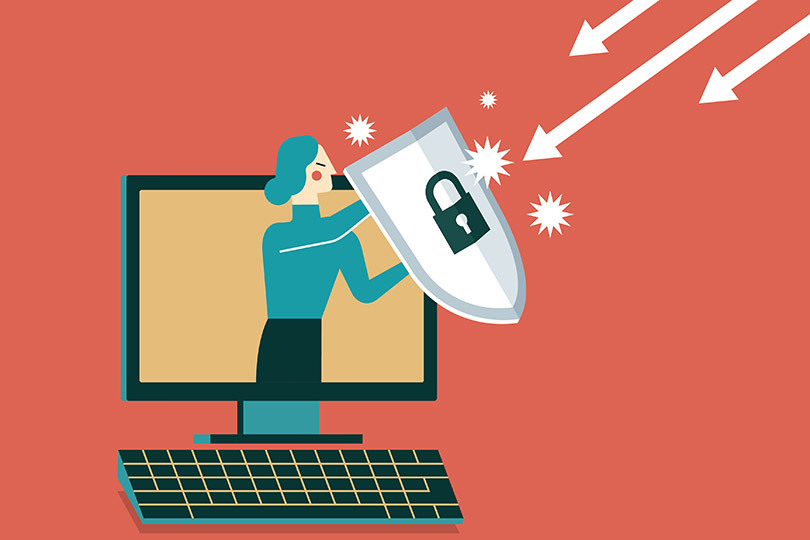To protect yourself on the Internet, you don’t need to have a lot of computer skills; just follow a series of simple rules
Coinciding with Cyber Monday, November 30 also celebrated the International Day of Information Security. Despite the first term being more famous, the official day was established earlier, back in 1988, as a consequence of the first case of self-replicating malware that affected the Internet (at that time Arpanet). Morris Worm infected 6,000 of the 60,000 networked servers in the United States (including NASA’s research center) and rendered some of them nearly useless.
After the incident, the Association of Computational Machinery decreed that every November 30 all users would be reminded of the need to protect their data in the digital plane. Leaving behind the battles of ‘the computer friend’, if we stick to the data, cybercrime has an impact on the world economy of 490,000 million euros, similar to 1% of world GDP.
In Spain, according to a cybercrime report published by the Ministry of the Interior this year, 218,302 crimes committed on the internet were reported in 2019, 35.8% more than in 2018 and almost double those registered in 2017. These crimes they already represent 9.9% of the 2.2 million criminal offenses known in the last year.
The most common cybercrime is Internet fraud with 192,375 cases. Far below, but in second place, are threats and coercion with 12,782 cases. As an example of how lucrative it can be to engage in cybercrime, last year the biggest cybercriminal in the history of Spain was arrested, Lupine, a young man of only 23 years old who was earning more than 300,000 euros a month.
At the end of Black Friday and at the gates of more sales in Madrid, protecting yourself on the Internet is a priority to avoid being the victim of a scam. “It is a matter of time before we all suffer the consequences of an Internet crime, and the best thing we can do so that we are not caught off guard is to know the main forms of these cyberattacks”, explained María Laura Mosqueda, CEO and founder of the company TechHeroX .
ALWAYS WITH PADLOCK
Phishing is the best known form of virtual scam. Through an email, criminals pose as a bank or a service such as Amazon or Paypal. These emails include a link that they ask to click and that redirects the user to a false website that, in appearance, is similar to that of the bank or the aforementioned services.
From the form on this website, criminals obtain access codes and other personal data with which to steal the victim’s bank account. A good way to verify if we are on the bank’s page and not in a fraudulent one is to look at the left area of the navigation bar, where the website address is written, and see if a padlock appears that serves to verify the authenticity of the site.
DO NOT DISCLOSE YOUR PASSWORDS
Neither banks nor streaming or shopping services, such as Amazon or Aliexpress, request confidential information either by email or in phone calls. So if you receive an email, SMS or call asking for your personal information and passwords, do not answer. Also be wary if you have a lot of spelling mistakes, have wrong conjugated verbs or the sender is a Nigerian prince.
BEWARE OF BARGAIN WEBSITES
Remembering the case of the young Lupine, whose base of ‘criminal business’ was in fraudulent web pages that offered products at a very low price. Be wary of chollazos as much as those emails that tell you that you have won an iPad, a year of Netflix, a collaboration with a brand known because you are an ‘influencer’ (having 10 followers) or a Russian boyfriend with the appearance of Iván Drago (who asks you for money to buy a ticket and come to see you).
That Slavic suitor is as fake as the Louboutin shoes that they sell on that website for ten euros. If you enter the card details in the form on that website that sounds so good but looks terrible, neither the blonde nor the heels will get to you.
As an advice, do not get carried away by the offer at first glance, check the padlock on the left side of the navigation bar and when you go to make a virtual purchase, use a card intended for these transactions, preferably one of recharge mode , with little balance.

